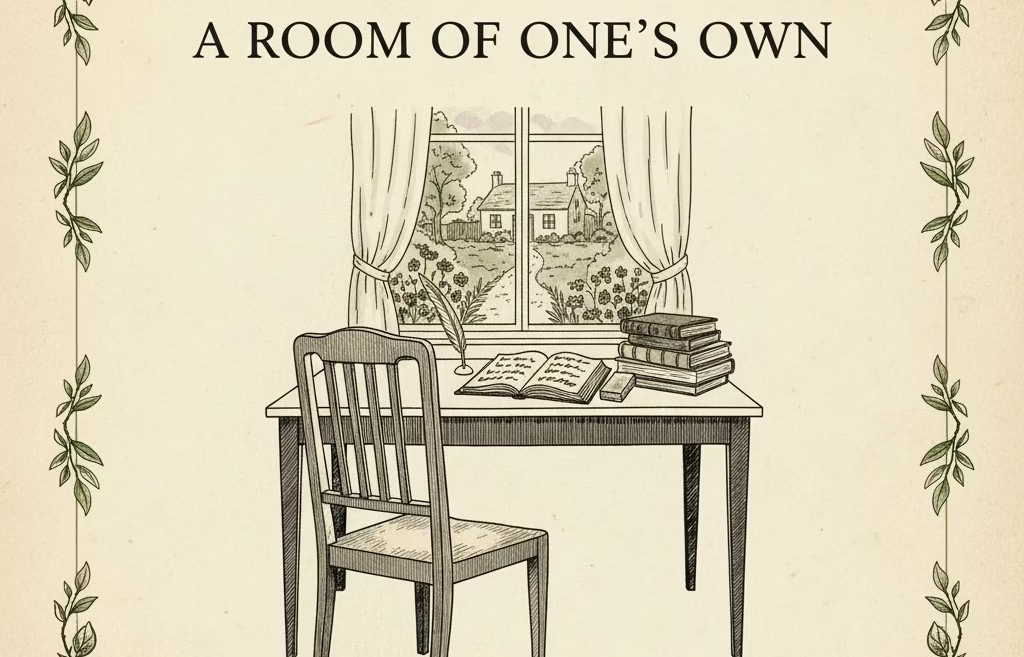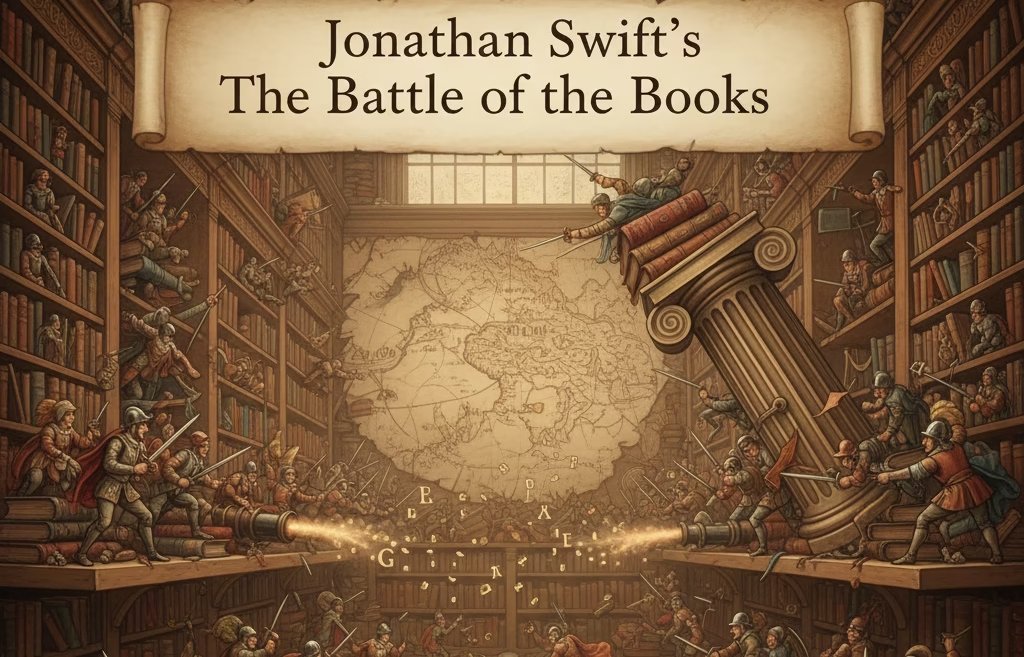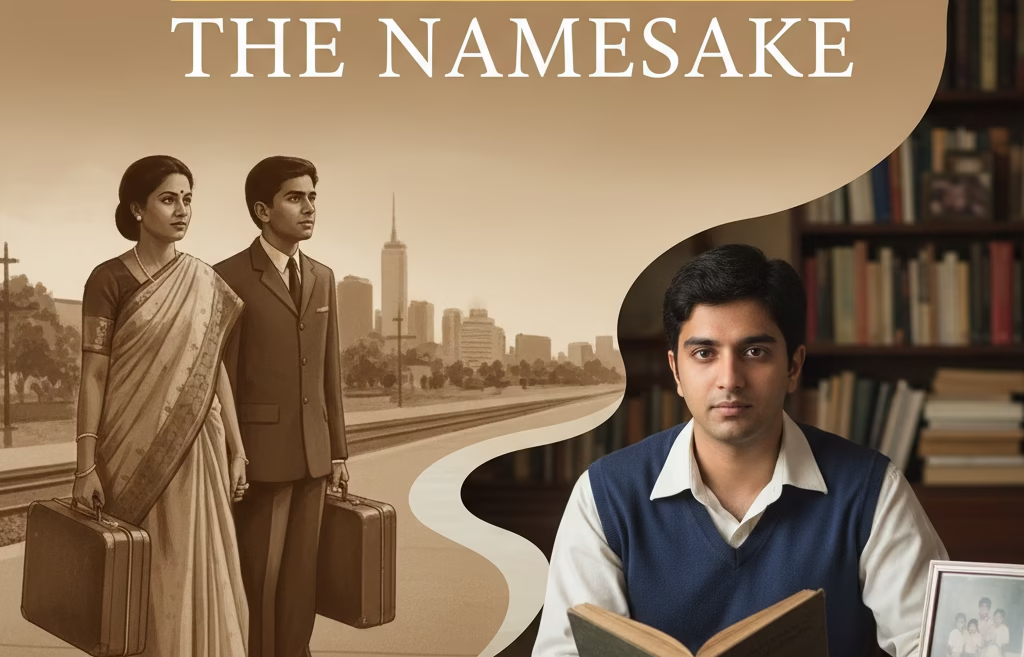Introduction
Eugene O’Neill’s The Iceman Cometh is a monumental achievement in American theatre, renowned for its psychological complexity, philosophical depth, and unflinching portrayal of human despair. First performed in 1946, this four-act play is set in the dingy back room of Harry Hope’s bar in New York City, 1912. Within these walls, O’Neill gathers a cast of broken men and women—failures, dreamers, and drunks—each clinging to their “pipe dreams” as a means of survival. The arrival of Theodore “Hickey” Hickman, a charismatic salesman with a dark secret, shatters the fragile equilibrium of the bar’s regulars and forces them to confront the illusions that sustain them. This in-depth analysis will explore the play’s plot, characters, themes, symbolism, and it’s enduring significance.
The Iceman Cometh : Overview
Setting and Background
The entire play is set in Harry Hope’s bar, a seedy establishment in the lower reaches of Manhattan. The year is 1912—a period of social upheaval and transformation in America. Yet, inside the bar, time seems suspended. The outside world is irrelevant to the regulars, who have retreated from life and now exist in a state of perpetual stasis. The bar is more than a physical setting; it is a metaphor for the characters’ psychological imprisonment.
The regulars are a motley collection of ex-revolutionaries, failed businessmen, former police officers, prostitutes, and dreamers. Each has a story of disappointment and loss, and each numbs their pain with alcohol and fantasy. They endlessly discuss their “pipe dreams”—grand plans for redemption, reunion, or success—but never act on them. The bar serves as their sanctuary, allowing them to postpone reality indefinitely.
Main Characters
Harry Hope: The owner of the bar, Harry is a widower who has not left his establishment since his wife’s death. He is the embodiment of inertia, unable to move forward or let go of the past.
Larry Slade: Once a passionate anarchist, Larry is now a detached observer, resigned to the futility of life. He serves as the play’s philosophical anchor, articulating its existential themes.
Don Parritt: A troubled young man searching for absolution, Parritt’s arrival and confessions drive the play’s tragic undertones.
Theodore “Hickey” Hickman: The once-boisterous salesman whose annual visits are eagerly anticipated by the regulars. Hickey’s transformation—he arrives sober and evangelical—disrupts the bar’s fragile equilibrium.
The Bar Regulars: A diverse group, including ex-revolutionaries, former police, prostitutes, and failed businessmen. Each is defined by their lost ambitions and persistent denial. MORE ABOUT CHARACTERS
The Iceman Cometh : Plot Analysis
Act I: Anticipation and Stagnation
The play opens in the early morning hours at Harry Hope’s bar. The regulars are in various states of drunkenness, bantering about their “pipe dreams.” Each character has a fantasy they cling to:
Harry Hope insists he will leave the bar to walk around the block on his birthday.
Willie Oban, a Harvard Law School dropout, claims he will return to practicing law.
Joe Mott dreams of reopening his gambling house.
Chuck Morello and Cora, the bar’s resident couple, plan to get married and move to the country.
Despite these declarations, none take any real steps to change their circumstances. The bar is a cocoon, insulating them from the world’s demands.
The regulars eagerly await the arrival of Hickey, whose annual visits are legendary for the rounds of drinks and jovial camaraderie he brings. Hickey is seen as a symbol of hope—a man who, despite his own troubles, always manages to lift the spirits of the group.
Act II: Hickey’s Arrival and Disruption
Hickey arrives, but he is not the man they remember. He is sober, intense, and determined to “save” his friends by forcing them to confront the truth about their lives. Hickey insists that their pipe dreams are destructive illusions and that only by abandoning them can they find peace.
He begins a crusade to strip each regular of their comforting fantasies:
He challenges Harry to finally leave the bar.
He urges Willie to face the reality of his alcoholism and lost career.
He confronts Joe about the impossibility of reopening his gambling house.
He pushes Chuck and Cora to question their plans for marriage.
Hickey’s relentless honesty is both liberating and cruel. The regulars are shaken, their defences crumbling under his scrutiny.
Meanwhile, Don Parritt arrives, seeking out Larry Slade. Parritt’s mother was a radical anarchist, and he is tormented by guilt over betraying her to the authorities. His confessions to Larry add a layer of psychological and moral complexity to the unfolding drama.
Act III: Confessions and Collapse
As Hickey’s campaign intensifies, the regulars make half-hearted attempts to pursue their dreams. Each effort ends in failure or humiliation, confirming Hickey’s assertion that their hopes are unattainable.
The mood in the bar grows increasingly tense. Hickey reveals the reason for his transformation: he has murdered his wife, Evelyn. He claims it was an act of mercy, freeing her from the pain of loving a hopeless drunk. Hickey’s confession is both shocking and ambiguous—was it an act of love or a desperate attempt to escape his own guilt?
Parritt’s torment also reaches a climax. He admits to Larry that he betrayed his mother, hoping for her arrest and execution. Overwhelmed by guilt and unable to find forgiveness, Parritt ultimately commits suicide by jumping from the fire escape.
Act IV: Return to Illusion
The regulars are left shattered, in the aftermath of Hickey’s and Parritt’s confessions. The truth has not set them free; it has only deepened their despair. One by one, they retreat into their old habits, resurrecting their pipe dreams and resuming their routines.
Hickey is taken away by the police, his fate uncertain. The bar returns to its former state, the cycle of illusion and denial unbroken.
The Iceman Cometh : Major Themes
Illusion vs. Reality
The central conflict of the play is the tension between comforting illusions and harsh truths. O’Neill suggests that while illusions can be self-defeating, they are often essential for survival. The characters’ refusal to face reality is both their greatest weakness and their only shield against despair.
Hickey’s attempt to strip away these illusions is ultimately destructive. The regulars are not liberated by the truth; they are undone by it. The play raises profound questions about the value of self-deception and the limits of honesty.
Hope, Despair, and the American Dream
O’Neill offers a sobering critique of the American Dream. For the bar’s inhabitants, hope is not a catalyst for change but a source of ongoing disappointment. Their dreams of redemption, reunion, or success are never realised, trapping them in a cycle of hope and despair.
The play suggests that the American Dream, while inspiring, can also be a cruel illusion—one that promises more than it can deliver and leaves its believers stranded in a limbo of unmet expectations.
Guilt, Redemption, and Self-Destruction
Hickey’s story is a powerful exploration of guilt and the desperate search for redemption. His attempt to “save” others is ultimately a reflection of his own need for forgiveness. Don Parritt’s tragic arc—his confession and suicide—highlights the destructive power of guilt and the human longing for escape.
The play questions whether true redemption is possible, or whether it is yet another illusion that people cling to in order to make sense of their suffering.
The Nature of Community and Isolation
Despite sharing the same space, the regulars remain profoundly isolated from one another. Superficial camaraderie marks their interactions, but each ultimately faces pain alone. The bar, while a place of refuge, is also a prison—a reminder of the characters’ inability to connect meaningfully with others.
O’Neill explores the paradox of community: the regulars rely on each other to sustain their illusions, but they base their relationships on denial and avoidance rather than genuine intimacy.
The Passage of Time and Stagnation
Time is a recurring motif in the play. The bar is a place where time stands still, and the regulars are trapped in a perpetual present. Their inability to move forward is both literal and symbolic—a reflection of their psychological paralysis.
The play’s structure reinforces this sense of stasis. The action unfolds over a single day, but the characters’ lives have been repeating the same patterns for years. The passage of time is both a source of anxiety and a measure of their failure to change.
The Iceman Cometh : Character Analysis
Larry Slade
Larry is the philosophical heart of the play. Disillusioned by life and politics, he stands apart from the other regulars, observing their struggles with a mixture of empathy and resignation. Through Larry, O’Neill explores themes of existentialism, the search for meaning, and the difficulty of genuine self-acceptance.
Larry’s interactions with Don Parritt are particularly significant. Parritt sees Larry as a father figure and confessor, hoping for absolution. Larry, however, is unable to offer the comfort Parritt seeks. Their relationship is a microcosm of the play’s larger questions about guilt, forgiveness, and the limits of human connection.
Hickey
Hickey’s transformation from a jovial drunk to a relentless truth-teller drives the play’s action. His insistence on honesty is both a blessing and a curse, as it forces the regulars to confront painful realities. Hickey’s own motivations are complex—he confesses and seeks punishment for his crime, revealing the limits of redemption and the dangers of imposing truth on others.
Hickey’s character is a study in contradiction. He is both saviour and destroyer, liberator and oppressor. His actions raise difficult questions about the nature of salvation and the price of self-knowledge.
Don Parritt
Parritt’s journey is marked by guilt and a desperate need for absolution. His betrayal of his mother and subsequent suicide serve as a stark reminder of the consequences of unresolved guilt. Parritt’s interactions with Larry and the other regulars deepen the play’s exploration of forgiveness and self-destruction.
Parritt’s story is also a commentary on the generational divide. He is the youngest character in the play, and his inability to reconcile his ideals with reality mirrors the struggles of the older regulars.
The Bar Regulars
Each regular in Harry Hope’s bar represents a different facet of lost hope. Whether it’s a failed marriage, a forgotten cause, or a squandered career, their stories form a tapestry of disillusionment. Despite their differences, they unite through their dependence on alcohol and their stubborn grip on unattainable dreams.
Willie Oban: Once a promising law student, now a hopeless drunk.
Joe Mott: A former gambler, dreaming of reopening his business.
Chuck Morello and Cora: A couple whose plans for marriage are perpetually postponed.
Jimmy Tomorrow: A former journalist, always promising to return to work “tomorrow.”
Rocky Pioggi: The cynical bartender, who manages the prostitutes and maintains a façade of detachment.
Each character’s story is a variation on the theme of self-deception and the struggle to find meaning in a world that offers little hope.
The Iceman Cometh : Symbolism
The Iceman: More than a running joke, the iceman represents death, the end of illusions, and the cold reality that awaits everyone. The phrase “the iceman cometh” becomes a chilling reminder of mortality.
Pipe Dreams: These unattainable hopes are the lifeblood of the bar’s patrons. Their destruction leads to despair, suggesting that some illusions are necessary for emotional survival.
Alcohol: Serving as both a literal and metaphorical escape, alcohol allows the characters to avoid confronting their failures and the emptiness of their lives.
The Bar: Harry Hope’s establishment is a microcosm of society—a place where the marginalised gather, seeking solace in community but ultimately finding only isolation.
The Fire Escape: Parritt’s suicide from the fire escape is a powerful symbol of escape and the ultimate price of facing unbearable truth.
The Iceman Cometh : American Drama
The innovative structure, psychological complexity, and philosophical depth enhances the play. It is a well defined work of early 20th-century American theatre, . O’Neill’s influence is evident in countless later works that grapple with alienation, disillusionment, and the search for meaning.
The play’s structure—a single setting, a large ensemble cast, and a focus on dialogue over action—was groundbreaking for its time. O’Neill’s willingness to confront uncomfortable truths and to delve into the darkest corners of the human psyche set a new standard for American drama.
The Iceman Cometh is frequently studied in literature and theatre courses for its rich characterisations, complex themes, and enduring relevance. Playwrights such as Arthur Miller, Tennessee Williams, and Edward Albee reflect its influence in their works.
Conclusion
The Iceman Cometh endures as a profound meditation on illusion, hope, and despair. Its unforgettable characters, rich symbolism, and philosophical insights make it a masterpiece of American drama. O’Neill’s exploration of the human need for dreams—and the consequences of living without them—continues to captivate and challenge audiences today.
Whether you are a student, teacher, or theatre lover, this play offers a powerful lens through which to examine the complexities of the human psyche. Its relevance has not diminished with time; if anything, the questions it raises about hope, illusion, and the search for meaning are more pressing than ever.
THE ICEMAN COMETH : Frequently Asked Questions
What is the main message of The Iceman Cometh?
The play reveals that illusions are often essential for survival, and confronting reality without them can be devastating. O’Neill suggests that self-deception, while potentially destructive, is sometimes the only way people can cope with disappointment and loss.
Who is the iceman in the play?
The iceman is a metaphor for death and the end of comforting illusions. The phrase “the iceman cometh” is a running joke among the regulars, but it takes on a deeper, more ominous meaning as the play progresses.
How does the play end?
Parritt takes his own life, the authorities arrest Hickey after he confesses to murder, and the regulars return to their pipe dreams. The cycle of illusion and denial remains unbroken.






1 Comment
[…] EXPLORE OTHER AUTHORS […]